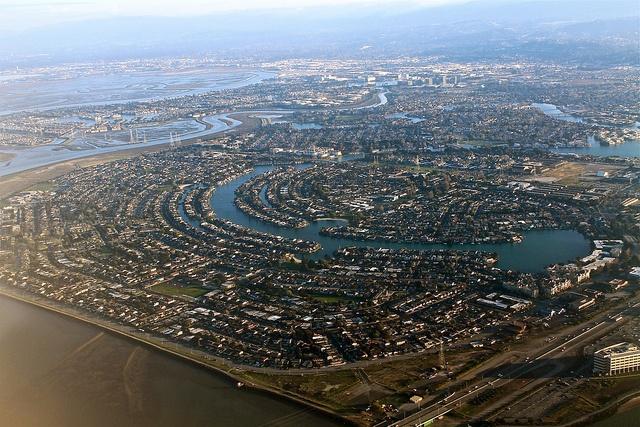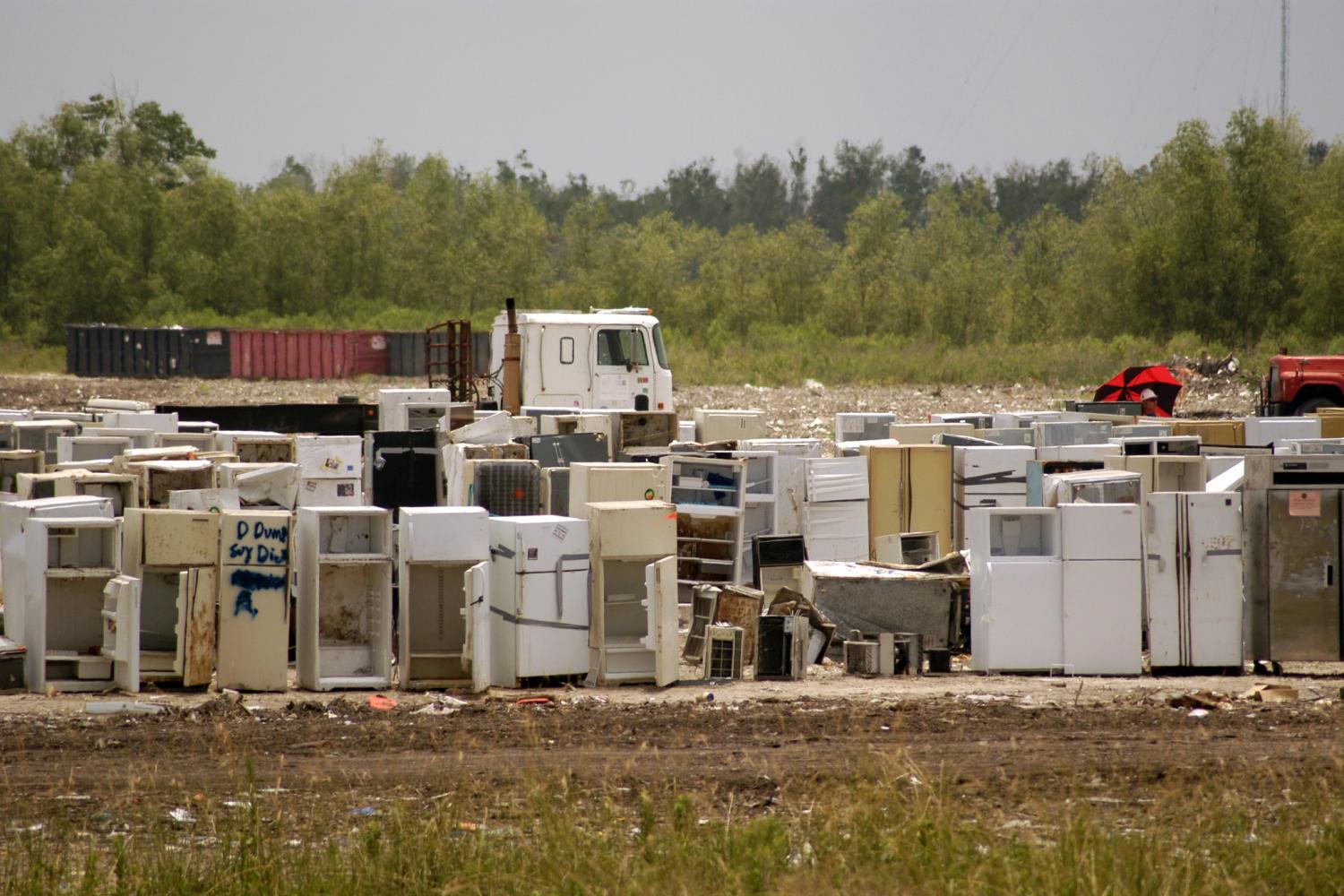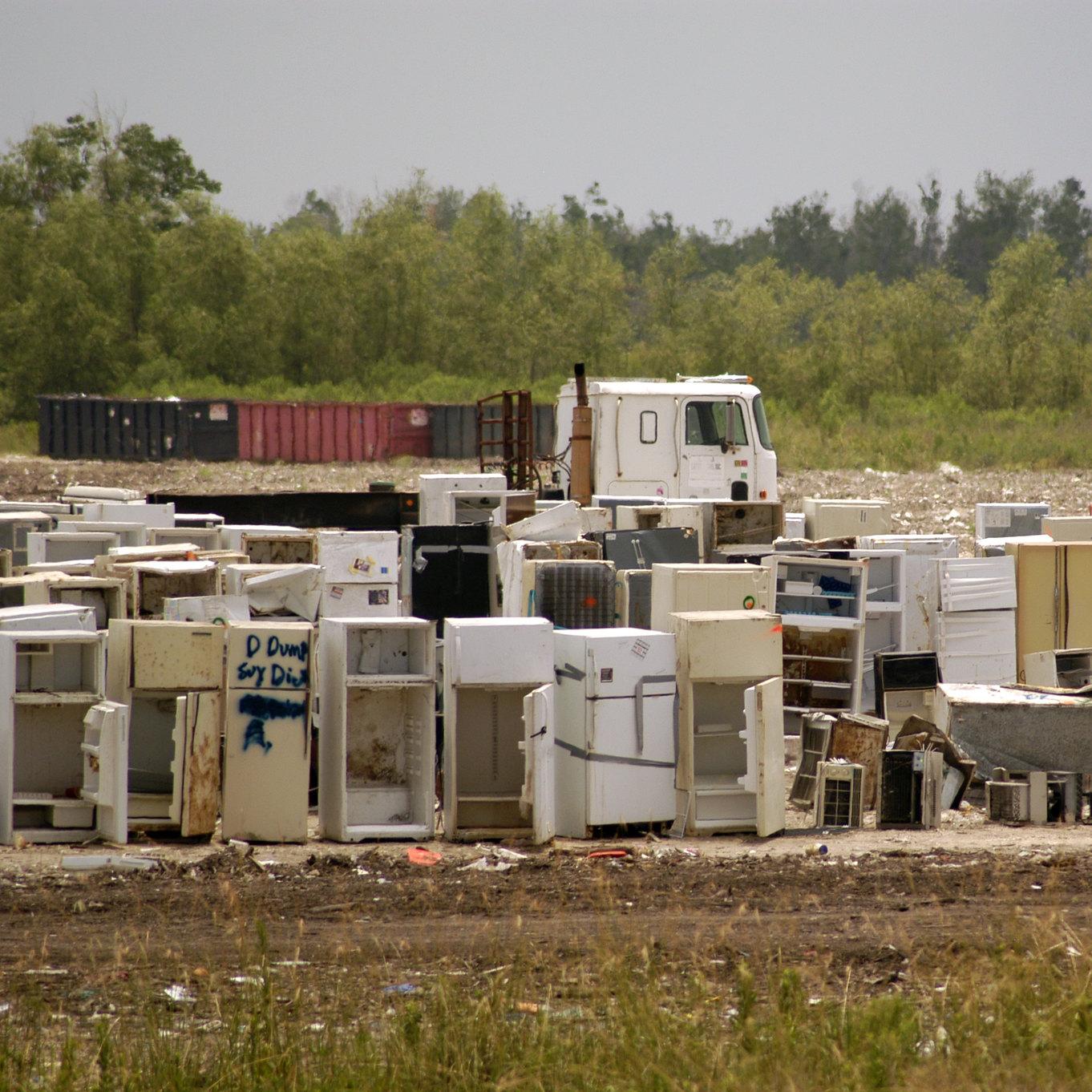Walking in Between: Making a Positive Impact as a Millennial


By Greg Doyle
“Do you know what you want to do with your life?”
Millennial after millennial is asked this question. Repeatedly. The answers vary. Some disregard the question. Others choose to use it as an opportunity to reflect on their passions, goals and aspirations.
If you are reading this, there is a good chance you identify with the latter. These passions, goals and aspirations may be connected to your desire to make a positive impact on the world. Or maybe not. But to those who can relate, I hope to provide some help, advice and context in dealing with this ever-present, and at times annoying, question.
As a recent graduate, I know this question all too well. I enrolled in college as a business major. However, as I began completing the required courses in accounting, finance and marketing, I soon felt unfulfilled. After this realization, I embarked on a quest to combine my interest in business with my passion for helping others.
Here are five things that I learned along the way, which may or may not help you in your own personal journey:
1. Find mentors
Spend some time finding mentors who you feel you can relate to. Target those who you feel have an interesting job or work at an exciting company. Throughout college I would research corporate social responsibility (CSR) leaders at brands I connected with and reached out to them via LinkedIn asking for 15 to 20 minutes of their time. I used these opportunities to learn more about their career path. Each conversation I had helped me clarify my vision for my future professional life.
2. Don't compare yourself to others
While in business school, I often found it hard not to compare myself to others. Most of my classmates were interested in working at big companies, such as General Electric and Aetna, upon graduation. It was common for business students to accept full-time job offers at the end of their junior year.
When I was asked about “my plan,” I often felt inferior because I wasn’t doing similar things. However, eventually people began to respect and support my unique interests and passions. I soon learned the importance of connecting with other business students who were feeling the same way. This allowed me to stay motivated toward my goals, aspirations and vision for my post-grad professional life.
3. Learn as much as possible
In addition to networking, I soon learned the value in new experiences. By exploring opportunities for professional growth, such as internships, conferences and student organizations, I met others who shared similar interests, built a strong resume and, most importantly, further refined my interest in social impact. But learning can be as easy as picking up a book (or reading articles on TriplePundit). Ask your mentors (see No. 1) for suggestions.
4. Recognize "no" as an acceptable answer
It is OKAY to say “no” when asked, “Do you know what you want to do you’re your life?” Industry professionals often ask this, in some variation, when they meet students in interviews, at networking sessions, etc. Instead of saying “yes” and explaining your interest, try saying: “I’m not sure. It is hard for me to say because I have yet to be exposed to all the different opportunities that are out there.”
I used this response constantly throughout my four years in college. Instilling this perspective will allow you to get in the habit of viewing your career interests as an evolutionary process. I still don’t know what I want to do with my life. But as soon as I started to view professional development as a constant process, the pressure to come up with “a plan” quickly faded away.
5. Be honest with yourself
Stay committed with your interests. Define your set of values. This will allow you to remain committed to making a difference in the world.
Image Credit: Flickr/Moyan Brenn
Greg Doyle is a Business Development Associate at Good Sports, a nonprofit that helps to lay the foundation for healthy, active lifestyles by providing athletic equipment, footwear, and apparel to disadvantaged young people nationwide. He can be reached at [email protected].
College Students Living Sustainably


By Blair Libby
In the neighborhoods surrounding colleges and universities, a growing number of houses are dedicating themselves to environmentally-conscious and sustainable living. At CITRUS (Community Initiative To Restore Urban Sustainability) House, students from Santa Clara University are practicing a cooperative and eco-friendly lifestyle.
CITRUS House began in 2005, when “House Mama” Lauren McCutcheon (class of ‘03) and her roommates decided to create a community hub for sustainable living. Under the mantra of “think globally, act locally," CITRUS residents began to invite neighbors and students to documentary showings, potluck dinners, gardening parties and, on occasion, spontaneous jam sessions. The founders’ vision was to go outside of the college cocoon and seek human engagement -- the most powerful element of a low-impact, community-building lifestyle. Sharing, contributing and celebrating are the key aspects of life at CITRUS.
In the spirit of collaboration, CITRUS has most recently worked with SCU’s Food and Agribusiness Institute to host workshops on sustainability in the kitchen, as well as organic gardening and composting. The home is also a frequent host for LOCALS (Living Off Campus and Living Sustainability) and BLEJIT (Bronco Leaders for Environmental Justice Investigating Truth). Situated in an urban area, CITRUS helps demonstrate to students that no matter where you end up, it’s possible to live with reverence for the planet by living intentionally and respectfully. Some of that urban sustainability is realized in the San Jose Bike Party. Every third Friday, a group of nearly 30 students meet at CITRUS to bike to downtown San Jose, California, where they join up with the thousands of other community cyclists taking part in the ride.
In addition to growing backyard tomatoes, leafy greens, peppers, herbs and fruit trees, living in CITRUS means making a commitment to cultivate sustainable eating habits. The kitchen is stocked first from the garden, then from the local farmer’s market to buy what’s in season. When residents include animal-derived foods, they try to obtain them from farmers and ranchers who are certified humane, organic and the like. Therefore, practicing vegetarianism or veganism becomes habitual for most tenants. “Eating and shopping at farmers’ markets changed my diet dramatically," said current resident Jordan Webster (class of ‘16). "I went from eating meat daily to a mostly vegetarian diet.” And all those red plastic cups? They’re washed and reused too.
Besides food, taking shorter showers, air-drying clothes, and using green cleaning products or natural alternatives are crucial to a sustainable community. As students come and go every four years, they leave behind furniture, dishes and other household tools, some of which can be inherited and shared between generations of residents. Whatever is discarded is picked up and offered to incoming students and neighbors around Santa Clara.
CITRUS’ vision is that it continues to be a "training ground" for sustainable living in the urban environment. The students who live and visit there have an opportunity to educate, share, and experience a culture that’s often missing from college students’ lives. In inspiring others, CITRUS acts as a seed for lifestyles that tread more lightly on a beautiful planet.
Image credit: Santa Clara University
Blair Libby is a senior at Santa Clara University, studying Environmental Science and living in CITRUS House.
Holidaymakers show growing appetite for responsible tourism


Travel companies with a good environmental record are increasingly gaining a commercial advantage, finds new research from ABTA, the Association of British Travel Agents.
The survey reveals a steady increase in the number of people prepared to pay more for a holiday with a company based on a better environmental and social record. A quarter of people (25%) said they would be prepared to do so, up from one in five (19%) in 2011, after having dropped to only 14% in 2012.
There is growing sentiment amongst consumers too that it is the travel company's responsibility to be environmentally responsible. Over four in ten consumers (45%) agree with this, up from a third (31%) in 2011. Only one in ten (13%) think this is not the case. The majority of consumers (62%), also believe that travel companies should ensure that their holidays help the environment, with only 5% disagreeing.
The demographic of 25-34 year olds are the most likely age group (37%) to choose one company over another based on their environmental record. They are also the most likely (34%) to be prepared to pay more for a holiday with a company based on a better environmental and social record. Those with a young family are also the most likely (37%) to be willing to pay more for a holiday with a company based on a better environmental and social record.
Nikki White, ABTA Head of Destinations and Sustainability said: “This new ABTA research shows that there is a growing appetite for holidays that are provided responsibly. The fact that younger consumers, aged 25-34, are the most likely to value companies with a good environmental record suggests that we will see demand for environmental credentials further increase in the future.
"The public are also very clear in their views that they see it as the industry’s job to take responsibility for this and that there should also be certification systems in place such as ABTA’s Travelife scheme to ensure that they can quickly and easily identify companies that are taking greater steps in sustainability.”
Picture credit: © Monticelllo | Dreamstime.com
Tech Titans: Community Citizens?


Corporate social responsibility (CSR) is steadily moving from a "nice-to-have" to a business imperative. U.S. and U.K. companies in the Fortune Global 500 now spend $15.2 billion a year on CSR initiatives. And as investors continue their calls for non-financial disclosures and consumers ask for more information about the products they buy, CSR is only gaining in importance.
But there's another crucial figure that sheds light on how companies are approaching CSR: In the U.S., in-kind donations, such as giving away free products to nonprofits, accounted for 71 percent of companies' CSR spending, reports the Financial Times. Cash donations tack on another 16 percent, with employee giving and volunteering making up the remaining 13 percent.
Notice a pattern here? Giving away cash or material goods like food, blankets, education software or prescription drugs is surely admirable. But many companies assume that simply by engaging in philanthropic efforts, they've met their social responsibility. They can make charts for their CSR reports; their executives can show up to shareholder meetings with some great stats; and they can communicate their shining 'success stories' to consumers via social media. But there's another vital component of CSR that's sometimes missing in this approach -- community engagement.
Yes, even companies that cut greenhouse gas emissions and water, give away cash, and generally consider themselves to be good corporate citizens often ignore community engagement in their CSR practices.
The San Francisco Bay Area, which has ballooned in both wealth and population since the influx of large tech companies, is a microcosm of the effects this missing link can have on communities around the world.
CSR in the Bay Area
The large tech companies that call the Bay Area home (think: Google, Apple, Facebook and Twitter) are generally ahead of the pack when it comes to innovation. This often includes CSR, with Google stirring up air-pollution management and constructing the largest solar power plant in Africa, and Apple jumping aboard climate pledges and making big commitments on sustainable forestry.
Along with innovation on the technology front, these firms take a new -- and decidedly modern -- approach to corporate culture. It makes sense really: These companies are competing for the best and brightest talent, so they want to encourage employees to pick their firm and stick with it. So, rather than a boring row of cubicles and a yearly holiday party, large tech firms construct sprawling office parks and craft cultures more akin to college campuses than a scene from "Office Space."
This is all well and good (after all, who wouldn't want to work in an office with a gym, 24-hour cafes, laundromats and game rooms?). But on their quest to create a team mentality that rivals the parking lot before the big game, some large tech firms have isolated their employees from the already-established communities around them. This only underscores these companies' focus on macro issues like climate change and deforestation in their CSR -- and their perceived neglect of community engagement.
As companies continue to pressure Bay Area communities to build new office parks, they often fail to lobby for housing and transportation options to go along with it, placing a strain on local infrastructure. Additionally, more highly-paid residents means more shops, restaurants and trendy coffee bars — all staffed by employees who are quickly being priced out of the area. This perfect storm creates a heap of problems for Bay Area residents -- as well as significant opportunities for government and the private sector to collaborate on solutions.
Housing in a zoning-constrained region
On average, rent prices in the Bay Area have increased by 15 percent since 2014, while salaries have risen by just 2 percent. In neighborhoods like Berkeley, Oakland and Emeryville, traditionally home to middle- and lower-income residents, rent has climbed by an average of 26 percent in the past year alone.
In short, residents of all economic levels are feeling the pinch. Even families doing fairly well for themselves can become quickly priced out of their neighborhoods as rent prices dwarf salary increases, even for white-collar workers. But, of course, thanks to income inequality -- another pressing global problem that finds a case study in the Bay Area -- lower-income folks are the hardest hit.
For an example, let's look at East Palo Alto, a small city directly abutting Facebook's fancy home in Menlo Park that houses mostly working-class people of color. In a recent housing report, the city noted that it is "very concerned" about promoting more affordable housing, "particularly in light of rapid increases in prices." Right now, despite skyrocketing rents and stagnant earnings, the city only offers 80 affordable housing units. It admits this often leads residents to share apartments, causing "overcrowding and associated problems."
What does all of this have to do with big tech companies? It's fairly simple: As these firms expand their staff and pressure communities for more space to build office parks, they rarely build housing for their employees or work with surrounding communities on plans for increased housing. Basic math (not to mention musical chairs) dictates that if more people are moving in, and the number of homes remains the same, someone is going to be left out in the cold.
While other West Coast cities solve this problem by simply building out -- a quick look at sprawling metros like Los Angeles and Phoenix prove that -- this isn't really an option in the Bay Area (nor would many people want it to be). The region sits on a peninsula, meaning space is finite. The entire Bay Area measures around 7,000 square miles, a land mass tasked with accommodating more than 7 million residents and counting. The high-rise solution used by many East Coast cities is also difficult, thanks to building height restrictions, the region's position on a fault line and, in the case of San Francisco, "sunset zoning" aimed at preserving iconic views and neighborhood character.
This all adds up to staggering prices -- and a large volume of former Bay Area residents being left in the dust. While restrictions present significant challenges, the Bay Area's mounting housing crisis is also an ideal opportunity for tech titans to use their penchant for innovation in a way that creates real impact on their communities.
Pressure on freeways and public transportation
The majority of tech campuses are located outside San Francisco, but many tech employees prefer urban life to the suburbs of Silicon Valley. This leads to congested freeways and overtaxed public transportation, as thousands of tech commuters make hour-long journeys to their isolated office complexes. To make matters worse, of the staggering 3 million commuters in the Bay Area, only about 10 percent use public transportation.
It's also worth noting that the Bay Area consists of 101 cities and nine counties. This means, when zoning and urban development proposals pop up, everyone is coming to the table with their own set of needs and demands. This has proven especially problematic when it comes to public transportation. In short: Commuters want more public transit options throughout Silicon Valley. But, in order to make these dreams a reality, tracks must pass through high-real-estate areas often hostile to their expansion.
Residents in these cities often take a NIMBY (not in my backyard) stance, pushing back against expansion of public transit systems due to concerns about noise pollution and unsightliness. Wealthy Santa Clara, for example, refused to allow the expansion of the Bay Area Rapid Transit (BART) train system for many years. As a result, Valley Transportation Authority (VTA) officials were forced to modify their plans: Rather than extending the line directly to San Jose, it will come in indirectly from the east to bypass Santa Clara.
This small example proves what we all already know: Money talks. And constant push-back from wealthy areas has more or less neutered political will to gain more funding for public transit -- despite increasingly congested freeways and outrage from community groups. While tech companies have tried to remedy the issue with solutions like the so-called Google Buses, the need for permanent and inclusive solutions remains -- and innovations in public transit present yet another golden opportunity for tech firms to use their disruptive prowess for good.
A rapidly expanding service economy
While tech company head-counts explode, service economy outfits like restaurants, bars, supermarkets, pharmacies, dry cleaners and coffee shops, as well as support services like landscaping, janitorial and housekeeping staff, come online to meet the daily needs of high-income employees.
While these businesses offer many new jobs, they don’t pay very well. And with the ballooning rent prices in the region, it becomes hard to imagine how minimum-wage employees can manage to keep a roof over their heads and food on the table.
The numbers don’t make the case much better: Although the living wage in the Bay Area is $13.77 for a single adult, the minimum wage is still just $9. A service industry employee can expect to take home around $22,000 a year, while the business and financial operations employees to whom they serve lattes rake in nearly $85,000.
With a noted shortage of affordable housing in the region, many service-industry employees share apartments -- and we're not talking about a standard roommate situation. Often multiple families share two- or three-bedroom dwellings, causing overcrowding problems similar to those noted in East Palo Alto. As rent prices in formerly affordable areas skyrocket, these residents are often pushed farther and farther out to the fringes of the Bay Area -- where few transit options exist to serve them and their commutes to minimum-wage jobs can be nearly two hours each way.
As tech companies strive to engage their own employees and make their lives better, they should equally lobby on the local level to improve the standard of living for the service-economy workers who serve those employees. While it's not standard CSR, action at this level allows companies to serve those less fortunate -- not in some far-off country, but in their own backyards.
3p dives deeper
Clearly, the challenges facing the Bay Area are as bountiful as they are intimidating. As a San Francisco-based company, these issues are near and dear to our hearts here at TriplePundit. That's why, over the next few weeks, we'll explore them in even greater detail.
In an effort to raise awareness and put a human face to these issues, we'll talk take a closer look at what's happening on the community level with respect to housing, transportation and the booming service economy. We'll talk to real Bay Area residents about how they're faring, and explore viable ways tech firms and government can work together to achieve solutions. Our journey will take us from Downtown San Francisco to San Jose, with stops in lesser-known cities like Mountain View, Sunnyvale and Cupertino along the way. If you miss an installment, you can catch them all here.
Image credit: Flickr/Patrick Nouhailler
Solving Climate Change: One (Hundred) Busted Fridges at a Time


This week, nations from around the world will sit down in Dubai, United Arab Emirates, to discuss a question that remains central to the battle against climate change: How can the world expedite the phase-down in emissions of the super greenhouse gases that are heating our atmosphere?
Ninety-five countries have now submitted proposals to amend the1987 Montreal Protocol to phase down production of hydrofluorocarbons (HFCs), which are used globally in refrigeration and air conditioning, insulation, aerosols, solvents, and fire suppression. These gases were originally developed to replace chlorofluorocarbons (CFCs), because they don't deplete the ozone layer.
However, HFCs are harmful in their own way: They, like all fluorinated gases including CFCs, are potent greenhouse gases -- from 500 to 11,000 times as harmful to the atmosphere as carbon dioxide by some measurements. Proposals for winding down their production and use range from regulatory changes to financial compensation, all with long timetables and lengthy lists of expenditures aimed at cushioning the financial and material impact of an essential phase-down.
And while countries haggle over the fine details in Dubai, one company in San Francisco is coming up with its own, albeit unorthodox, answer to the problem.
EOS Climate, the brainchild of Joe Madden, Jeff Cohen and Todd English, was launched in 2009 with the objective of leveraging carbon markets to address climate change, starting with the most powerful greenhouse gases. [Full disclosure -- Joe Madden is on the TriplePundit advisory board, and EOS Climate supported TriplePundit's recent crowdfunding efforts.] The passage of California's landmark environmental bill, the Global Warming Solutions Act in 2006 (AB-32), mandated sharp reductions in greenhouse gas emissions across the state. It also enabled the creation of a market-based system that gave the young company a platform to advance its strategy.
"Jeff authored a greenhouse gas methodology for the destruction of [ozone-depleting substances]," Madden told TriplePundit. The methodology that was later approved by the Climate Action Reserve and adopted by the California Air Resources Board for eligibility for compliance credits under AB-32. This was EOS Climate's launch point in developing market-based answers to climate challenges, like the impact of CFCs.
"That was the basis for creating something that could finance the destruction of these CFCs. And in conjunction with doing that, we built an ecosystem of partners that were associated with CFCs at end of life," Madden continued. Companies like the appliance recycler, Jaco Environmental, and a leading waste management company, Clean Harbors, became partners in EOS' efforts. So did Hudson Technologies, a pioneer in refrigerant reclamation.
"We made a value chain, where one had not existed, to serve a new market, where one had not existed," Madden told us.
California's innovative global warming bill helped launch the company's endeavors beyond the state's borders, Cohen noted.
"As part of the California cap-and-trade program, we have done projects all over the country where we recover CFC refrigerants from older equipment from refrigerators to large commercial or industrial chillers that are still in use," Cohen said.
The direct emissions reductions resulting from those projects amount to somewhere in the neighborhood of 5 million tons of CO2 equivalent. "And that is EOS’ projects. If you add in projects that other project developers have done using the methodology that we originated, it is probably double that," Cohen continued. "In real-world terms, that is like preventing the emissions from the entire city of Los Angeles for a year."
In time, the company's focus in reducing greenhouse gas emissions expanded to high-impact commodities that are carbon-intensive, beginning with HFC refrigerants.
Cohen, who worked for the EPA managing U.S. implementation of the Montreal Protocol, said that government intervention has been incredibly effective in saving the Earth’s ozone layer. But he also noted that regulations cannot fully control the environmental impacts of greenhouse gases like CFCs and HFCs.
"As part of a government agency responsible for controlling those gases, I saw there was a gap in terms of what regulatory programs could do in contrast to market-based [strategies]," Cohen said. From his perspective, the only way to get control of what he saw as a "climate ticking time-bomb" -- which was exacerbated by aging equipment and the potential for unchecked leaks -- was from a market-based angle that engaged private partners and provided both an incentive and financial means for businesses to upgrade their refrigeration units.
Madden agrees. But the process wasn't easy, he added. "We had to forge quite a bit of new territory. There was not a market for that, there was not an ecosystem for that, and the project type itself was fundamentally different than, if you can call them 'conventional' emission reductions or offsets.”
A second lesson the company learned was that "if markets are going to drive environmental benefits, it has to be done in a market context that is not subject to regulatory drivers, or political will." Even though California's Global Warming Solutions bill served as the catalyst to the company's initial success, said Madden, "Interacting in that [cap-and-trade] marketplace is very difficult.
"One of the things that has emerged in the last three or four years is the fact that capital markets, meaning largely institutional investors, have become aware of carbon risk as a material financial risk in their portfolios." He said that wariness changes the way that a business directed at reducing carbon emissions is looked at. "It moves the driver from political to financial. It moves it out of a regulatory construct into a financial marketplace itself."
That lesson, he said, was largely due to the work of Carbon Tracker, which figured out just how many gigatons of CO2 (GtCO2) could be emitted into the atmosphere before we exceeded the 2 degree C threshold of global warming. They also determined what would ultimately define "unburnable carbon" or in financial terms, stranded assets, tied up in reserve holdings.
"That awareness, is that the risk associated with carbon is a financial matter,” explained Madden. "Markets are quite sophisticated and they don’t like risk. So an incredible amount of effort is now going into trying to create mechanisms to quantify and ultimately price carbon risk for companies, products and supply chains.
Toward that end, EOS has developed a number of instruments to differentiate commodities and materials based on their climate impacts. One of the most recent is a new methodology for the use of reclaimed HFC refrigerants and advanced refrigeration systems, which has just been approved by the American Carbon Registry. EOS is developing the partners and strategy to engage businesses at all levels in expanding the production and use of reclaimed HFC refrigerants that will help negate the need for new production and ultimately prevent greenhouse gas emissions.
"We are going to be working with leading industry associations to give incentives to service technicians, refrigerant distributors, equipment manufacturers and ultimately any retailers and supermarkets or hotel chains to start using or expand the use of reclaimed HFC refrigerants" said Cohen. "That will change how companies make decisions with their capital investments.”
"Rather than just say, well, we’re going to get out of CFC and HFC equipment today just because it is the right thing to do, now there will be more opportunities to make more strategic decisions based not only on cost but on the environmental impacts. So it won’t be just binary decisions based on getting into a different type of refrigerant class."
New "climate friendly" refrigerant alternatives to replace HFCs in new equipment are available but the HFC-based refrigeration and air conditioning systems and appliances already in widespread use around the world will be around for decades to come. EOS strategy to energize the market for recycled/reclaimed refrigerants provide immediate climate benefits and are an important complement to the gradual production phase-out being negotiated in Dubai this week.
And that ties back into Madden's proposal that to change the way that carbon emission reductions are dealt with, the driver must be a financial one, not a regulatory or value-driven one.
For EOS' founders, reaching this point in the company's growth is one more step in fulfilling the vision they had when they first drafted the company's business plan years ago, said Madden.
"At the very base of the company there was a concept: If we were going to spend some time, let’s try and find an area that if we do it right, it can have potentially global impact."
EOS Climate and its growing list of partners may have not only the best answer for mitigating the climate impact of these super greenhouse gases, but a new, and much needed look on how to incentivize new emission reduction strategies for multiple carbon-intensive commodities that can really make a difference for the climate.
Image: USDA/Flickr
The Top 5 CSR, Sustainability and Employee Engagement Reports of 2015 – And Why They’re Important


By Susan Hunt Stevens
We have reached a new era in business – one where employee engagement, sustainability and corporate social responsibility (CSR) all play critical roles in overall success. But, as I continue to hear from companies, figuring out where and how to start – whether that’s adopting a new sustainability initiative or implementing a full-blown employee engagement program – is often most difficult part of the process. Now that’s not to say that these companies don’t understand the benefits and positive impact of such programs. In fact, it’s quite the opposite. So much has been made over the past couple of years around just how valuable these programs can be to improving employee satisfaction, retention, productivity and overall bottom-line profits.
To that point, here are the best, most compelling CSR, sustainability and employee engagement research reports that have been published in the past year. What’s important to understand is that these reports go far beyond their stats and figures – they provide valuable insights into how companies are approaching employee engagement, the uptick in the number of companies adopting a “business for good” approach and positive-impact mindset, what employees are looking for from the companies they work for, the importance of employees finding value in their work, and more.
1. Global Human Capital Trends 2015: Leading in the New World of Work – Deloitte
As the report highlights, global organizations today must navigate a “new world of work” – one that requires a dramatic change in strategies for leadership, talent and human resources. Josh Bersin, principal and founder of Bersin by Deloitte, Deloitte Consulting LLP, explained: “As demand for talent picks up, the balance of power in business is rapidly shifting from the employer to the employee. Moreover, workers are becoming more mobile, contingent, and autonomous, and as a result, harder to manage and engage. In this new world of work, organizations need to re-imagine the way they manage people and come up with new, out-of-the-box ideas to make themselves relevant."
The key takeaway here is that employees no longer simply clock-in at work, complete their tasks and clock-out. Therefore, organizations must by agile and strategic in their offerings for employees who are demanding flexible schedules, their ability to deliver more benefits (not all necessarily in the form of pay) and their diligence in providing opportunities – whether it be volunteering or leading a corporate recycling program – that enable employees to find deep and personal meaning in and outside of work.
2. State of the American Manager: Analytics and Advice for Leaders – Gallup
The study, which may be one of the largest of the year, features analysis that measures the engagement of 27 million employees across 2.5 million manager-led teams in 195 countries. The report examines the crucial link among talent, engagement and vital business outcomes, including profitability and productivity. The report also reveals that engagement is highest among employees who communicate with their managers on a daily basis.This is important, because until recently, not much attention was paid to the value of positive employee-manager relationships. But as companies are finding out, this is a key aspect in driving an engaged workforce, increased productivity, decreased turnover and widespread business benefits.
3. State of Sustainability – Ethical Corporation
Ethical Corporation released its State of Sustainability report this year after surveying nearly 1,500 sustainability and CSR professionals from around the world. In the report, the majority of respondents (71 percent) said their company’s organizational leader understood the value of sustainability, and 87 percent agreed that sustainability was becoming an increasingly important strategy.
What we’re seeing here is that, maybe for the first time, businesses are approaching sustainability and CSR initiatives as need-to-haves, not just nice-to-haves. And as consumers demand more and more from the companies they engage and spend money with (more on that later), businesses are debunking the myth that pursuing sustainability is a drain on profits. Instead, they are understanding that by delivering on customer demands, as well as trying to do what’s right as global citizens, these programs can actually boost the bottom line.
4. 2015 Global CSR Study – Cone Communications/Ebiquity
If 2015 has proved anything, it’s that CSR is here to stay – not only because consumers are demanding it, but also because companies are leading their own initiatives to adopt sound corporate behavior and drive positive impact. Among other findings in this report, 90 percent of respondents worldwide indicated they would switch brands to support a specific cause, and 84 percent purposefully sought out socially-responsible products. Beyond that, 61 percent of respondents globally indicated they would buy a lesser-quality product to support a CSR initiative.
And these types of findings aren’t just wishful thinking – look at companies like Patagonia, Timberland and TOMS, who have all openly committed to delivering sustainable products and supporting positive impact programs domestically and abroad; these companies have intensely loyal customers (brand advocates, if you will), are all experiencing incredible profits (despite focusing efforts on great products, service and positivity first), and establishing themselves as industry leaders in more ways than one.
5. 7th Annual State of Sustainable Business Report – Business for Social Responsibility (BSR) and GlobalScan
BSR is associated with an impressive number of businesses worldwide, so this report is critical in understanding the global mindset around sustainability and CSR. And as some of the other reports this year suggest, the connection between corporate actions and consumer demand is more closely connected than ever before. The findings from the Annual State of Sustainable Business Report suggest that companies are further integrating sustainable initiatives into their business strategies; sustainability is playing an increasingly important business role; human rights remains the top CSR priority for companies; and a large majority of companies include sustainability measures in their key performance indicators (KPIs).
What all of these reports tell us is that we have reached a new height for the importance of employee engagement, CSR and sustainability in the business world. So important, in fact, that I would argue these factors are going to be key differentiators for whether a company succeeds or fails.
Image credit: Pixabay
Susan Hunt Stevens is the founder and CEO of WeSpire, the employee engagement platform company that empowers forward-thinking global organizations to reach their greatest potential. She is a recognized expert in the use of social and game mechanics to drive positive behavior change. Previously, Stevens spent nine years at The New York Times Company, most recently as senior vice president/GM of Boston.com. She is a graduate of Wesleyan University and The Tuck School of Business. Check out WeSpire's recent survey, "The Evolution of Employee Engagement Research Report 2015".
Government and Business Must Collaborate to Fight Climate Change


Climate change is real, and it is already wreaking havoc on the planet and interfering with the lives of its inhabitants. The five hottest years on record have occurred since 1997, and the 10 hottest years since 1990. Earth’s average temperature increased by 1 degree Fahrenheit to the highest level in the past four centuries. As a result, the oceans are warming and rising, and extreme weather events such as hurricanes and drought are increasing. Certain wildlife, such as the iconic polar bear, are at risk of extinction.
Something must be done to keep global temperature rise to 2 degrees Celsius above pre-industrial levels. That’s the threshold experts cite as the don’t-go-beyond mark to continue life as we know it. In December, world leaders will meet in Paris to hammer out a successor to the Kyoto Protocol.
Country commitments to reduce greenhouse gas (GHG) emissions are crucial to staying beneath the 2-degrees threshold. A new report by the United Nations Framework Convention on Climate Change (UNFCCC) assessed the impact of over 140 national climate action plans, called Intended Nationally Determined Contributions (INDCs). The assessment found that together the climate action plans can “dramatically” slow global GHG emissions. It also found that the collective impact of the INDCs will lead to a decrease in per-capita emissions over the coming 15 years.
The report assesses the collective impact of climate plans from 146 countries as of Oct. 1. That includes the EU, which is a single plan representing 28 countries, and all other developed countries. It includes three-quarters of developing countries under the UNFCCC.
Together, the 146 national plans cover 86 percent of global GHG emissions, which is nearly four times the level of the first commitment period of the Kyoto Protocol. All of the industrialized country INDCs are unconditional, as are many developing country INDCs. Conditional contributions only represent about 25 percent of the total range of emission reductions.
The INDCs will decrease global average emissions per capita by as much as 8 percent in 2025 and 9 percent in 2030, according to the report. The climate action plans make it possible and affordable to stay below a 2-degree temperature rise by 2030. They are expected to slow emissions growth by about a third between 2010 to 2030 and reduce emissions by about four gigatons by 2030, compared to pre-INDC levels. All INDCs cover carbon dioxide, and many also cover other GHGs, including methane and nitrous oxide.
There has been a “significant increase” in the number of countries taking climate action, according to the report. There has also been an increase in the number of countries that have moved from project/program/sector based actions towards economy-wide policies and objectives. All countries have “raised the ambition of their climate action included in their INDCs compared with efforts communicated for the pre-2020 period,” the report states.
Businesses can contribute to reducing emissions
Businesses can also play a role in reducing GHG emissions. Enter an initiative by the World Business Council for Sustainable Development’s (WBCSD). Launched at the COP20 climate talks in 2014, the Low Carbon Technology Partnerships initiative (LCTPi) is a way for businesses to work together on climate change. A recent report by PricewaterhouseCoopers on LCTPi found that its contribution to fighting climate change is “complementary to government actions.”Each of the focus areas of the LCTPi, which include renewable energy and energy efficiency, have a commitment to reduce GHG emissions in 2030 compared to business as usual (BAU). If that is achieved, the LCTPi would reduce GHG emissions by about 17 to 18 gigatons of carbon dioxide equivalent (GtCO2) a year by 2030 compared to BAU. And that could get the world 64 to 68 percent of the way towards a two degrees pathway compared to baseline emissions in 2030. In addition, the initiative could help channel $5 to $10 trillion of investment into low carbon economic sectors and potentially support 15 to 35 million jobs in the wider economy every year.
Businesses and countries working together can reduce the GHG emissions which are heating up the planet. That would be good for the planet and its billions of inhabitants.
Image credit: Flickr/martin
What is the Future of SOCAP?


By Amber Bieg
Investors who want to learn more about investing capital toward social good don’t have to wait until the annual SOCAP (Social Capital Markets conference) reconvenes.
SOCAP is a world-renowned conference that intends to bring together thought leaders and established players to talk about social impact investing. SOCAP brings together global innovators, investors, foundations, governments, institutions, and social entrepreneurs to build a world we want to leave to future generations.
To make the event's content available every day to the world, SOCAP recently partnered with MissionHub, a network of Impact Hub co-working campuses in San Francisco, Berkeley, Philadelphia, New York City, and Washington, D.C., to launch SOCAP 365 and SOCAP TV.
Now, anyone who is interested in impact investing can have access to the social impact investing conversation beyond annual conference. Today, investors can find the HUB nearest them for an in-person program, or check out SOCAP TV, a streaming digital platform similar to TEDtalks which will release both recorded and streaming talks throughout the year. SOCAP TV will broadcast talks that are educational - including ones that cover the latest research - calls to action, and inspiring stories.
"As we produce world-class thought leadership each year at the SOCAP conference, we are excited to offer this curated content year-round, beyond our conference audience," Eryc Branham, CEO of MissionHUB, said in a statement. "The expansion of SOCAP-branded content allows us to expand our conversations from SOCAP and continue them 365 days a year at our campuses and on the web."
SOCAP 365 presents event and educational programming at MissionHUB campuses, each focusing on convening around specific SOCAP themes:
- Sustainable Cities at Impact Hub San Francisco
- Sustainable Food/Ag at Impact Hub Berkeley
- Financial Inclusion at Impact Hub NYC
- Impact Investing at Impact Hub Philadelphia
- Civic Innovation at Impact Hub DC
The educational program includes event workshops and online programming, which educate and build skills from a curriculum that changes every year with the help of their CEO, Eryc Branham. They also work with sponsors like Kiva Zip and the Google Impact Challenge. The added advantage to these sponsors is built-in partnerships with those who offer expertise on pertinent issues.
The result is the one of the largest convening of social entrepreneurs on a daily basis. Marissa believes that if it can be expanded further, it could truly be a unique way to grow social enterprise. Already, SOCAP 365 is growing as a professional training program, and is becoming known in academic circles.
“These impact investments are good long-term financial strategies. Long term impact investments are better long term than mainstream investment.” explains Marissa. “It’s really the future,” she says. “People have to figure out models to make this work. We are seeing the impact of models that don’t work.” Fundamentally, she sees that “investing in companies that do good is a powerful way to achieve something that governments might be behind in achieving.”
SOCAP 365 allows people to take problem solving into their own hands by creating and contributing to companies that do good. Marissa explains that this advances society because historically, the model for solving people’s problems has been through governments and non-profits. With social impact investing, she explains, social enterprise is using business as a design to solve problems. It is, therefore, a self-sustaining model, which addresses the bottom line and healing the world. Thus is born a system not dependent on contributions, but rather, active collaboration and a win-win for everyone.
She explains that there are new models for entrepreneurship being created every day. There are people she knows, for example, who are in the “super startup stage”, who barter for what they need, trading time for time. She recognizes this indicates a need for new time-banking models. Companies like Bitcoin and their latest incarnation, BitPesa - which just created a payment and trading platform for Africa - are creating new models for exchange.
Already, phone based payments are the norm in the developing world. CGAP reports, for example, that BitPesa opens up so many possibilities to help build everything from infrastructure to utilities to delivering clean water more affordably. This is because avoiding paper mail reduces costs, manages billing more effectively, and reduces time to make payments.
Marissa appreciates that the “nice thing about impact investing is that the conversations travel in those circles”, so the conversation about possible models continues to evolve. As they do, our society will evolve with them.
Amber Bieg is a philosopher-inventor-ecogeek with a passion for ethical finance and a mission to create a thriving future for everyone. She has nearly 15 years of experience in sustainability marketing, systems design and sustainable development. As the principal of Green-Ideas, Amber has worked with clients such as the City of San Francisco, Autodesk and ChicoBag on strategic sustainability marketing and sustainable behavior change campaigns.
3 Reasons Business Leaders Should Care About Upward Mobility


By Jeff Greene
Today, rather than being the world’s poster child for a fair and equitable economy, the U.S. -- home of the American Dream -- is one of the least equitable among Western nations.
It wasn’t always this way. I was fortunate to have been raised in the 1960s in a country that had opportunities for many to do better and do well. Growing up in a middle-class family, I started with absolutely nothing, and was able to live the American Dream to the fullest. Yet today, too few overcome the fundamental ways in which our current system rewards those with money and penalizes those who simply work hard.
This situation will only get worse as automation expands, and technology replaces more and more tasks. As a result, the American Dream is becoming the Disrupted Dream.
But why should business leaders care about the lack of upward mobility in America? As a successful businessman, I’ll give you three reasons why.
1. It’s good for business
As leaders of our businesses, it’s easy for us to ignore the consequences of the decisions we make that can create ripples in society. When we set impossibly high requirements for the candidates we interview, or we have unconscious gender bias in hiring, or we ignore the needs of our workers to receive a living wage in high-cost cities, we are encouraging conditions that can have real impacts on our economy.
We can make different decisions, yet still run profitable businesses. A growing cadre of leaders is demonstrating ways in which they can already make a difference. Quiktrip CEO Chet Cadieux pays employees a variety of bonuses, yet generates 50 percent more profit per square foot than his competitors. Paul Tudor Jones’ Just Capital is working toestablish new standards of corporate value beyond simple quarterly-driven metrics. Starbucks’ Howard Schultz has offered online degree programs to all of his employees without a four-year degree.
All of these decisions can be good for business, by raising the quality of our worker pool, increasing employee loyalty, and developing better reputations for our organizations.
2. A consumer-driven economy needs consumers
About 40 percent of our economy is directly driven by consumer spending. That’s not as much as the urban myth of 70 percent, which includes fuzzy elements like healthcare spending. But 40 percent is still a substantial portion, large enough to send our economy into a tailspin when it drops dramatically, as it obviously did during the Great Recession.
As the gap between “have-lots and have-nots” grows in America, there is simply less discretionary spending by those in the middle class. The '1 percent' can’t possibly spend enough to make up for this loss. Your business won’t thrive if you don’t have customers who can buy your products and services. We all need a thriving economy, and a thriving middle class, to ensure that our businesses stay healthy.
3. You can give others the same opportunity that you had
Let’s face it, success in business is a combination of hard work, business smarts, and luck. Over time, however, we often tend to discount the third, to the point where we don’t credit our luck much. There are plenty of people who are smart and work hard who haven’t yet been successful, while some of us were lucky in some way that contributed dramatically to our success.
Maybe you were born into a family of means. Perhaps you grew up in a town with a broad range of opportunities. You could have gone to a college with a tremendous alumni network that helped to fuel your success. Or you might have made a big bet in your business that went especially well - but could have turned out especially badly.
If we admit it to ourselves, we’ll realize that all of those occurrences to some extent depend on luck. As former Arkansas football coach Barry Switzer is credited with saying, “Some people are born on third base, and go through life thinking they hit a triple.” Yet many Americans don’t have the same opportunities that we had, so they start off a lot farther back, no matter how smart they are, or how hard they work. We need to give them a leg up, so they aren’t hobbled by the circumstances that kept them from having the same kind of success that we’ve had.
When I talk to everyone from small business owners to titans of industry, I see a sea change in the way people are beginning to think about kickstarting the American Dream. Business leaders can make conscious decisions, today, that can have demonstrable effects on increasing upward mobility. Fixing the systemic imbalances in our economy isn’t some theoretical exercise, and the time to move toward a more inclusive economy is now.
In America, we need many leaders from business who will work together to develop a vision for our inclusive and resilient economy of the future. I believe that creating a more inclusive economy is the defining issue of our time, and that leaders like you can have a real impact. At the end of the day, it’s not just good for the economy: It’s good for business. Yours.
Image credit: Flickr/Miguel Virkkunen Carvalho
Jeff Greene is an entrepreneur, the philanthropist founder of The Greene Institute, and the host of Closing The Gap, a conference bringing together leading thinkers and thinking leaders to develop strategies for an inclusive economy. Learn more at closingthegap.co.
Cosmetics Europe calls for phase out of micro plastics in beauty products


Beauty industry association Cosmetics Europe has called on its 4,000 members to phase out the use of solid microplastic ingredients in wash-off cosmetic and personal care products.
The move has been welcomed by a number of conservation NGOs, though some beileve that the edict does not go far enough.
Laura Foster, head of pollution at the Marine Conservation Society (MCS), commented: “Cosmetics Europe’s recommendation is not broad and ambitious enough but it demonstrates a clear willingness to work towards reducing the amount of plastic litter in the marine environment.
"It represents a logical step, emphasising the widely available alternatives first, towards an all-encompassing discontinuation of unsustainable solid microplastics in personal care and cosmetic products.”
While acknowledging its shortcomings, the MCS, Fauna & Flora International and Seas At Risk say that the announcement indicates Cosmetics Europe’s willingness to collaborate with the European authorities and international association partners, helping to pave the way for further discussions and progress in tackling this avoidable source of microplastic pollution.
Emma Priestland, marine litter policy officer of Seas At Risk, said that more remains to be done: “Plastic has no place in personal care products, and this is a great first step to tackling this source of pollution, but voluntary agreements with a limited scope are not enough.
For the next step, it is vital that we secure European-wide legislation to ensure that all plastic is removed from products that go down the sink and into the ocean.”